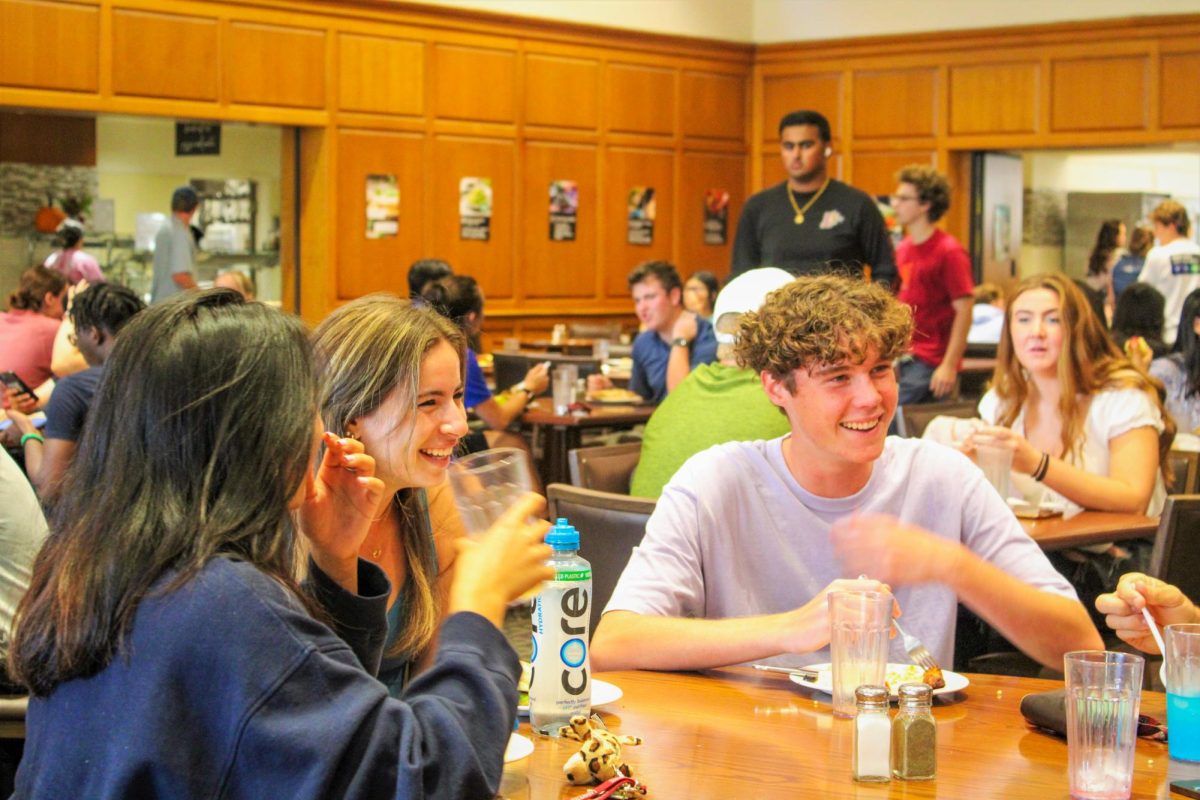Students and faculty are adapting to the new course schedule that features classes scheduled during the period previously known as the common lunch hour. While some students believe the new change has had little effect on their schedules, others point out the difficulty in scheduling clubs, meetings and other activities.
Several students noted that their lunchtime classes made it difficult to attend certain clubs and schedule meetings with peers and faculty.
“It’s not horrible,” said Brooke Weiss ’24, a member of the Biology Inclusion Committee. “But I did just miss a meeting yesterday.”
Scheduling has been most difficult for clubs and organizations that previously met during the common lunch hour. To address the new change, several clubs including Alternative School Break and the Women in Economics Club have been forced to find new meeting times during the afternoon or switch meetings to completely different days.
“We meet Mondays from 1 to 1:40 p.m., but that’s also hard because classrooms are now having weird times to be reserved,” said Anna Paulsen ’24, the president of Women in Economics. “It’s hard to balance what day works best for everybody, so we’re trying to think of maybe a biweekly schedule.”
The Landis Center’s Alternative School Break program held biweekly general body meetings on Fridays from 12:15-1 p.m. last semester. Now, the club meets on Mondays at 4:15 p.m. to accommodate students taking classes during the lunch period.
“It ended up being that … [only] one or two people said they could do any day of the week in the lunch hour,” Emily Tesbir ’24, the president of Alternative School Break, said. “That’s when we ended up looking at afternoon times.”
Despite the schedule, Alternative School Break has seen positive turnout results from their change in meeting times, according to Tesbir.
The Hillel Executive Board, who still meet on Mondays during the lunch hour, have also seen positive participation numbers, according to Naomi Shertzer ’25, the organization’s president.
Additionally, the Investment Club, which meets Fridays at 12:15 p.m., admits they have seen a slight decrease in attendance, but still get a “solid crowd,” according to their president Spencer Thomas ’24.
Other clubs, however, have not been able to adapt so easily.
Kaleidoscope, the social justice and multicultural peer educators’ group, is one example out of several clubs that were not able to move their meeting time outside of the previous common lunch hour. As a result, Kaleidoscope has been struggling with attendance numbers.
“We’ve always been totally understanding that this is a lot of people’s lunchtime, but folks who have class until 12:55 p.m. always come in very late and then some people have to leave at 1 p.m. for their 1:10 p.m. lab or class,” Kaleidoscope representative Abigail Schaus ’24 said. “So, I feel like our meetings have been emptier.”
Out of approximately 25 Kaleidoscope members, only eight to 10 people showed up to their second meeting, according to Schaus. To address low turnout rates, Kaleidoscope has been relying more heavily on online communication, which has slowed down their procedures.
“Typically, we wouldn’t send notes out because most people were able to come to the meetings, but now that the majority of our group isn’t there, we’ve been doing a more vigilant job of taking notes during the meeting and waiting to assign action items,” Schaus said.
Many students agreed that a benefit of the new schedule is less crowded dining halls. However, Paulsen pointed out the increase in mobile orders.
“It’s a race to mobile order midway through class …. Yes, [the change] has decreased the number of people in the dining halls during the lunch hour, but it increased the demand of people needing mobile orders and that system should probably be adopted to be a little bit more efficient,” Paulsen said.
Design Director Naomi Shertzer ’25 did not contribute writing or reporting.
























































































































